Look: Over 300 New ‘Nazca Lines’ Geoglyphs Have Been Revealed by AI
The Debrief ^ | September 23, 2024 | Christopher Plain
Posted on 09/25/2024 7:01:57 PM PDT by Red Badger
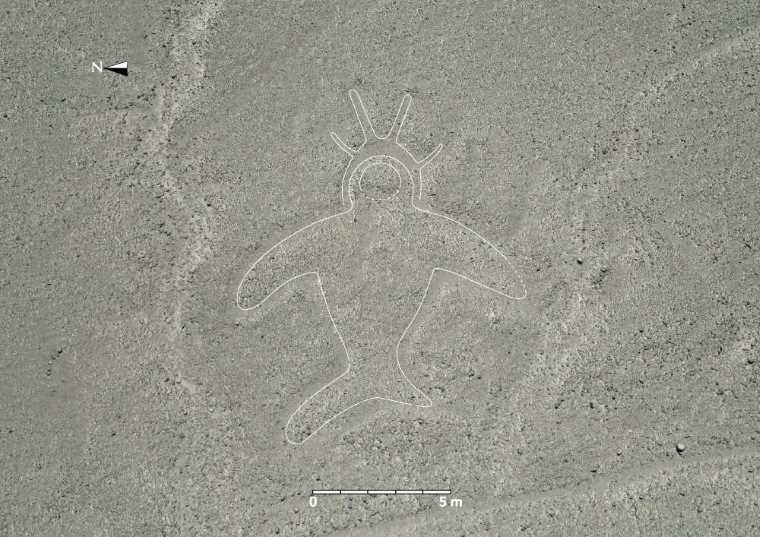
A newly discovered geoglyph on the Nazca Pama. Image credit: Sakai et al.
Advanced artificial intelligence (AI) has helped identify over 300 previously unknown ‘Nazca Lines’ geoglyphs, according to newly published findings. Discovered over a six-month period, the total number of images located using the new process nearly matches the 430 previously known Nazca Lines geoglyphs found more than 80 years ago.
The discoveries, reported by a research team led by Masato Sakai from Yamagata University in Japan, are helping unravel the possible meaning of these ancient artworks, some of which are 2,000 years old, and point to the likely existence of more Nazca Lines geoglyphs awaiting discovery.
The Mysterious History of the Nazca Lines
“In the Nasca Pampa, there are many other geoglyphs that have not yet been investigated,” Mr. Sakai explained in an email to The Debrief. According to Sakai and his team, the Nazca Lines are located 50 kilometers inland from the south coast of Peru, on a desert tableland about 500 meters above sea level.
The team also notes that these geoglyphs have survived for millennia “because they were constructed in an area not easily affected by flooding and not suitable for agriculture.”
In a published study outlining their newly discovered geoglyph treasure trove, the researchers note that the geoglyphs and associated motifs that cover large portions of the ground were made “by manipulating surface stones or gravel.” At least 50 of these massive artworks have been identified, dating back to their discovery by Western scientists in the 1940s.
Since the largest of these designs are most recognizable from the air and no record of these ancient people conquering flight exists, their mere existence has spawned several far-out theories. Among the most common is a proposal that these early people knew how to take flight. Even more controversial proposals involve the natives creating huge line-type drawings of animals and people for the viewing pleasure of ancient alien visitors.
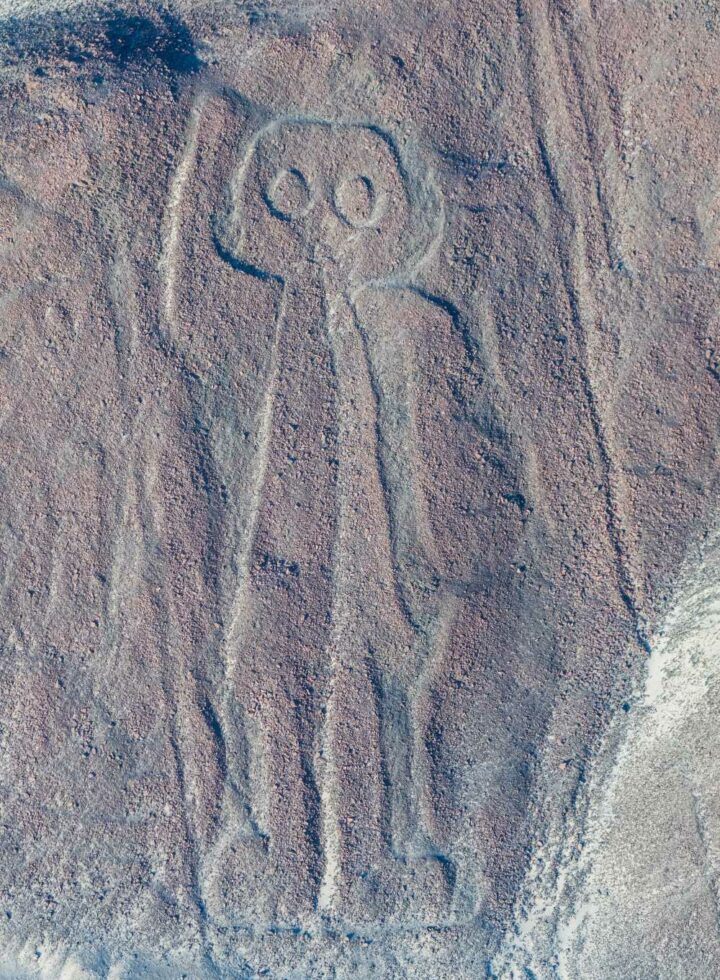
Nazca Lines
One of the larger Nazca Lines has been dubbed “the Astronaut” due to its resemblance to an Apollo-era American astronaut in a spacesuit (Credit: Diego Delso, CC BY-SA 4.0).
While noting there is no evidence to support those ideas proposed by amateur theorists, mainstream archaeologists have proposed more scientifically grounded theories based on decades of research. The authors of this study put them into five different categories, which they say are “not totally unrelated.”
“These are i) calendar and astronomy, ii) geometry, iii) agriculture and irrigation, iv) movement or communication, including walking, running, and dancing, and v) artistic expression,” they write.
To discover previously hidden geoglyphs while simultaneously shedding some light on their actual purpose, Sakai and colleagues employed a technology not available to previous generations of researchers, including both mainstream scientists and alternative theorists: AI. Specifically, Sakai told The Debrief his team used an AI imaging tool called ResNet50. The result is a treasure trove of geoglyphs that they say “provide(s) archaeologists with a unique window into the cultures and beliefs of the ancient people who started to use them at least 2,000 (years) ago.”
different Varieties of geoglyphs on the Nazca Pampa
Approximately 430 previously identified geoglyphs exist, but only 50 are the more well-known large line type that can be seen clearly from the air. The rest can be broken into subcategories, including geometric and figurative glyphs. According to Sakai and colleagues, the several-kilometer-long Nazca lines are part of the linear style of geometric geoglyphs. In contrast, the giant trapezoids are part of the aerial style of geometric geoglyphs. All geoglyphs appear to depict a handful of object categories and motifs.
“Known figurative geoglyphs depict humanoids, animals (bird, monkey, fox, spider, lizard, killer whale, whale, fish, feline, and camelid), plants (flower, seaweed, rhizome, and tree), and tools (needle, loom, pin, fan, and musical instrument),” they write.
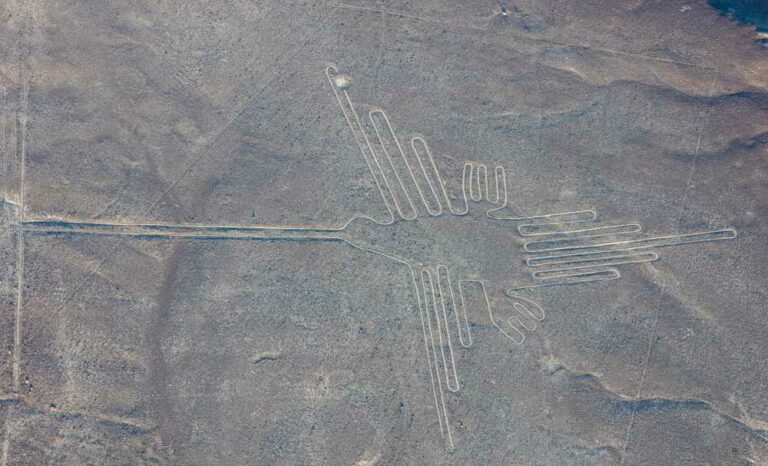
Nazca lines
Picture of a line-type geoglyph titled “The hummingbird” (Credit: Diego Delso, CC BY-SA 4.0)
These figurative glyphs are also found in two distinct styles: the massive line type and the smaller relief type. The line types average 90 meters in length, of which the team confirmed 50 by walking the Pampa grounds, 64% of which depict wild animals. Conversely, the team found that the relief-type figurative geoglyphs averaged only 9 meters in size. These often depict “humanoids” and domesticated animals such as llamas. One of the new images depicts a humanoid figure with an unidentified animal.
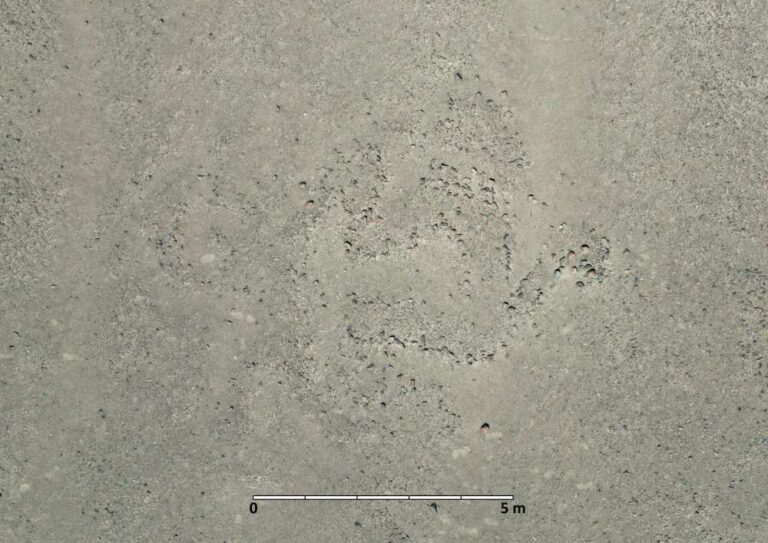
Nazca lines
Raw image of newly discovered relief-type geoglyph described as “Human and Animal” (Credit: Sakai et al.).
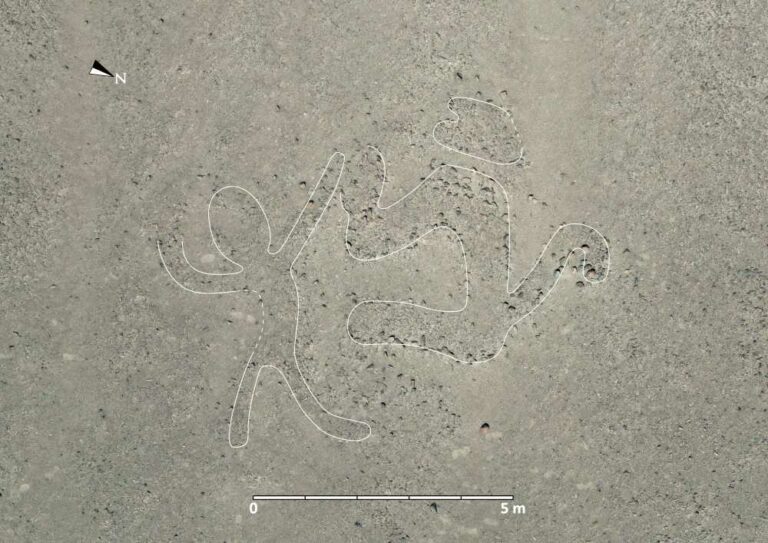
Nazca lines
AI-enhanced image of the “Human and Animal” geoglyph (Credit: Sakai et al.).
Unlike the more famous line-type geoglyphs, which are made by lining up stones to form recognizable shapes, these newly discovered geoglyphs are all smaller relief types that are much more difficult to identify with the naked eye.
When The Debrief asked if the geoglyphs were all constructed around the same time, Sakai said they are likely from different periods of history.
“According to previous research, the relief-type geoglyphs are older,” Sakai told The Debrief.
Newly Discovered Geoglyphs Include a Killer Whale Holding a Knife After six months of scanning the terrain, the AI software identified various styles and themes of Nazca Lines. According to the study, 81.6% of the relief-type geoglyphs depicted humans or domestic animals. While some were more easily recognizable, many likely would have been impossible to detect without the help of AI.
When asked if any newly identified drawings appeared to depict extinct animals, like the recently discovered South African cave paintings that may show a lizard-like creature that died off over 200 million years ago, reported by The Debrief, Sakai said some animals were easier to identify. For example, one relief-style geoglyph appears to be a bird.
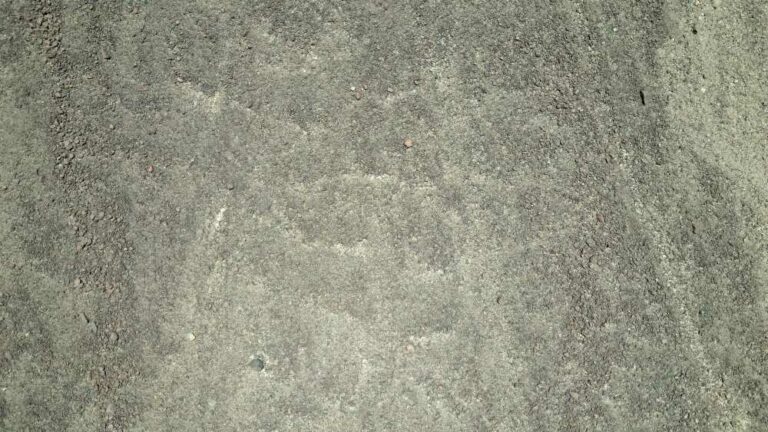
Nazca lines
“Naked Eye” image of one of the newly discovered Nazca Lines the researchers titled “Bird” (Credit: Sakai et al.).
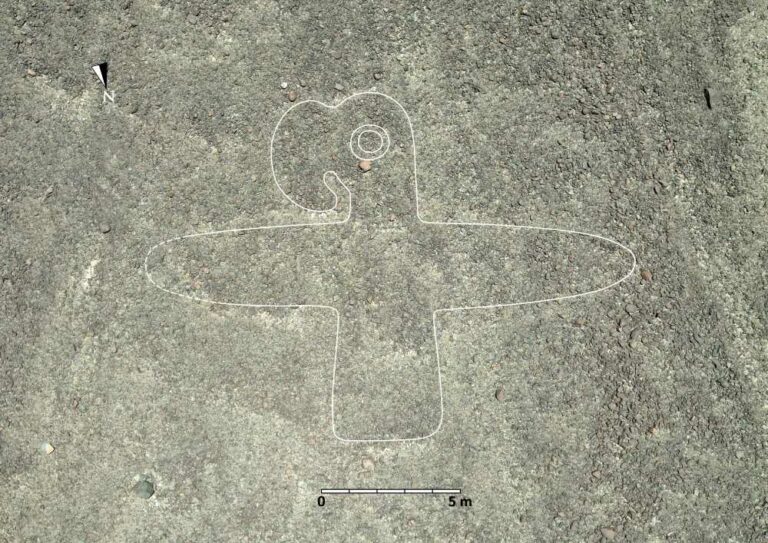
Nazca lines
AI enhanced image of the newly discovered geoglyph, “Bird” (Credit: Sakai et al.). Sakai also said the exact nature of many animals depicted was not immediately evident.
“There are some animals that are difficult to identify,” he told The Debrief. “In such cases, we classified them as ‘animals’.”

Nazca lines
Raw image of an ancient geoglyph titled “animal” (Credit: Sakai et al.).
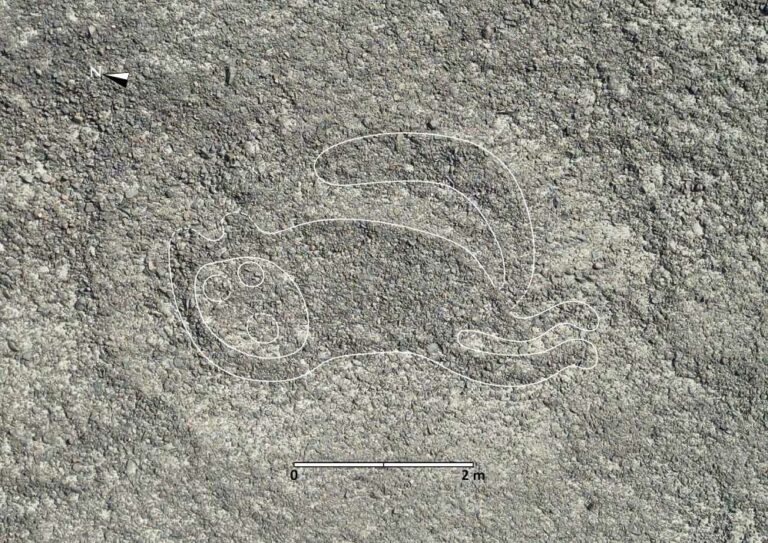
Nazca lines
AI-enhanced image of “animal” geoglyph (Credit: Sakai et al.).
Mr. Sakai provided a list of 14 of the most recognizable geoglyphs, all depicting humans, animals, or a combination of the two. Among the most striking is a pair of glyphs depicting what looks like a shark holding a shovel-shaped object. The researchers categorize these two geoglyphs as “Orca with a Knife.”
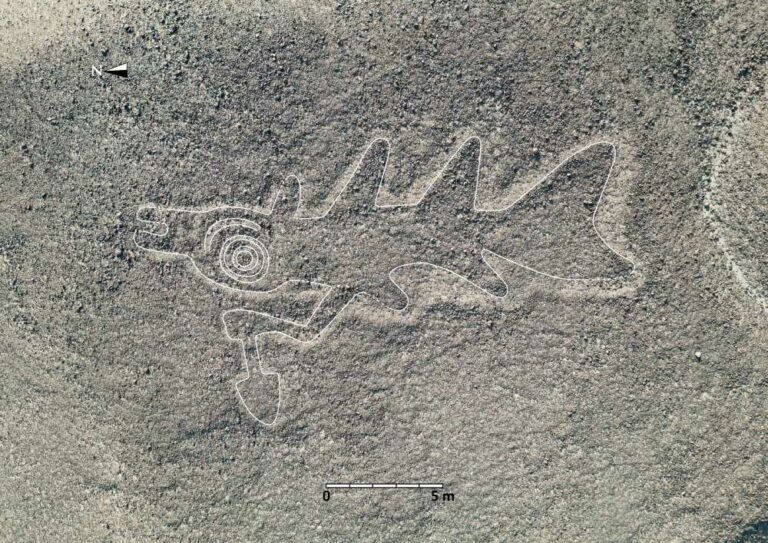
nazca lines
Raw image of geoglyph titled “Orca with a Knife” (Credit: Sakai et al.).
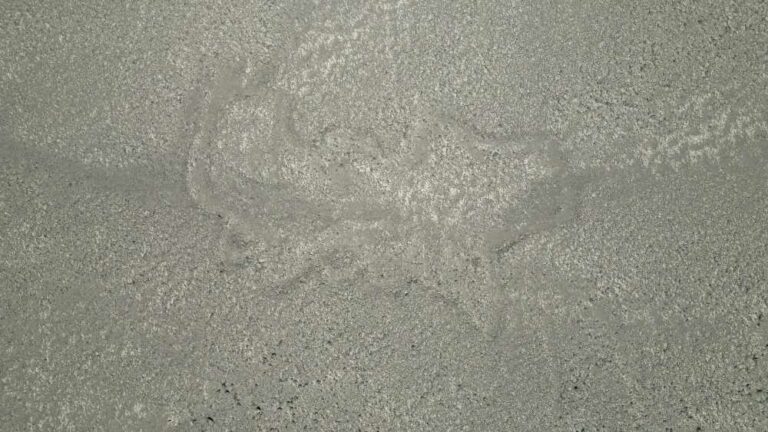
Nazca lines
AI-enhanced image of “Orca with a Knife” (Credit: Sakai et al.).
Nazca lines
Raw image of a second geoglyph also identified as “Orca with a Knife” (Credit: Sakai et al.).
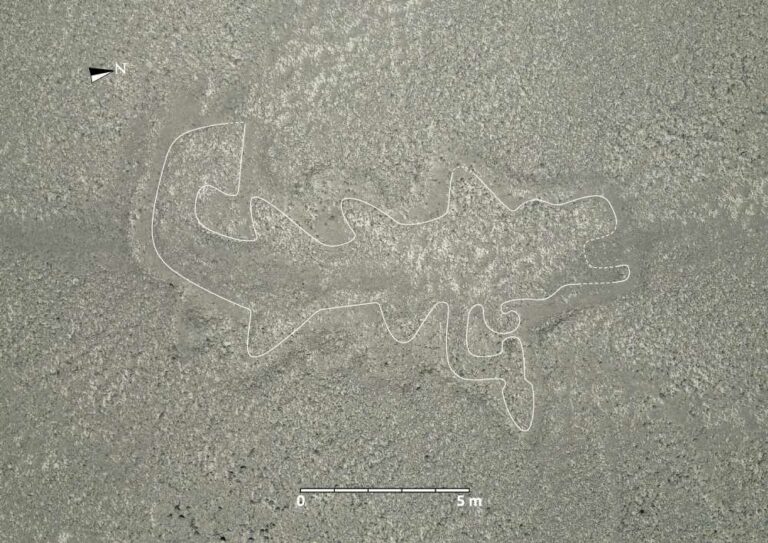
Nazca lines
AI-enhanced image of second “Orca with a Headdress” geoglyph (Credit: Sakai et al.).
One of the more striking images the researchers labeled “Humanoid with a Headdress” shows what may be an ancient leader, performer, or even spiritual shaman wearing what appears to be a decorative headdress.
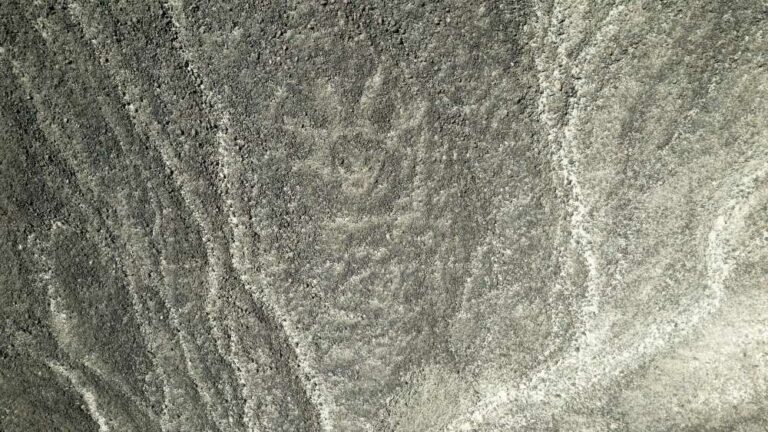
Nazca lines
Raw image of geoglyph categorized as “Human with a Headdress” (Credit: Sakai et al.).
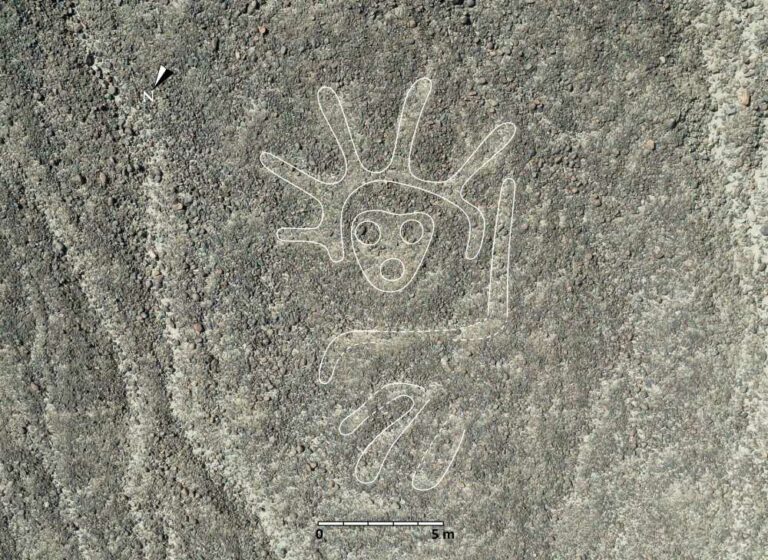
Nazca lines
AI-enhance image of “Human with a Headdress” geoglyph (Credit: Sakai et al.).
Along with the image of a human and an animal shown together, nine more of the geoglyphs provided by Sakai show humanoid figures or human-looking heads.
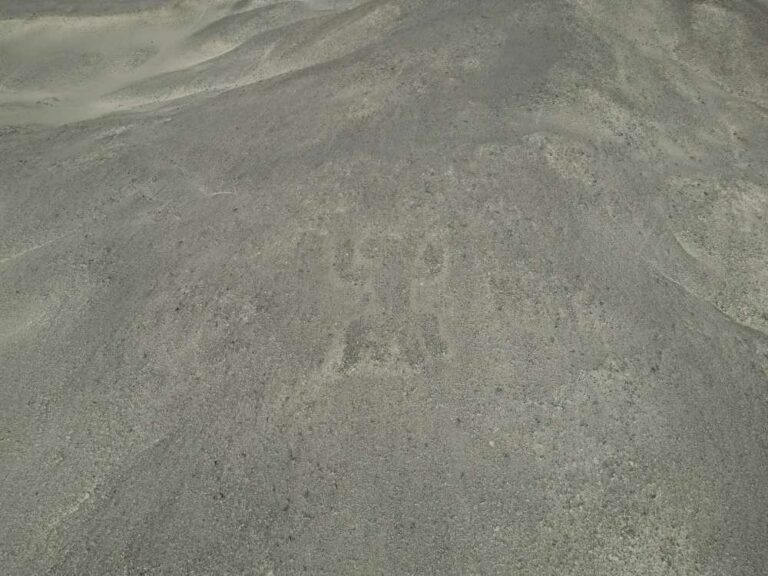
Nazca lines
Raw image of “Humanoid” geoglyph (Credit: Sakai et al.).
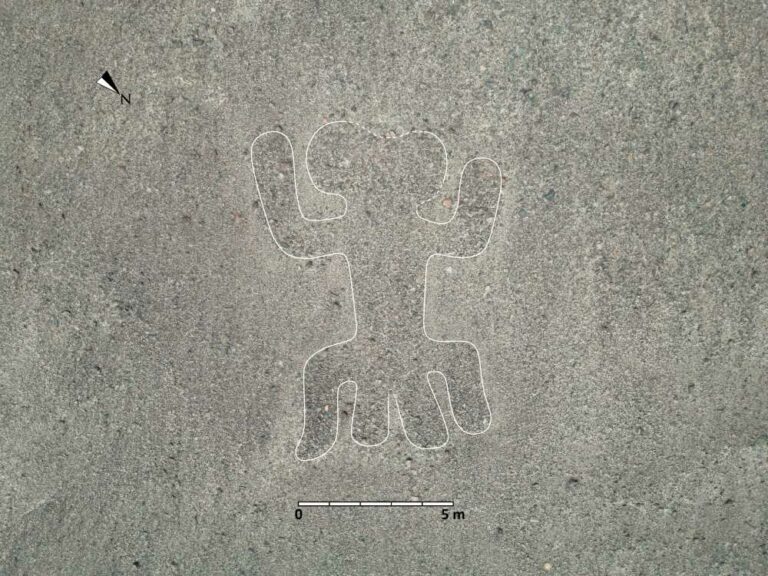
Nazca lines
AI-enhanced “Humanoid” geoglyph (Credit: Sakai et al.).
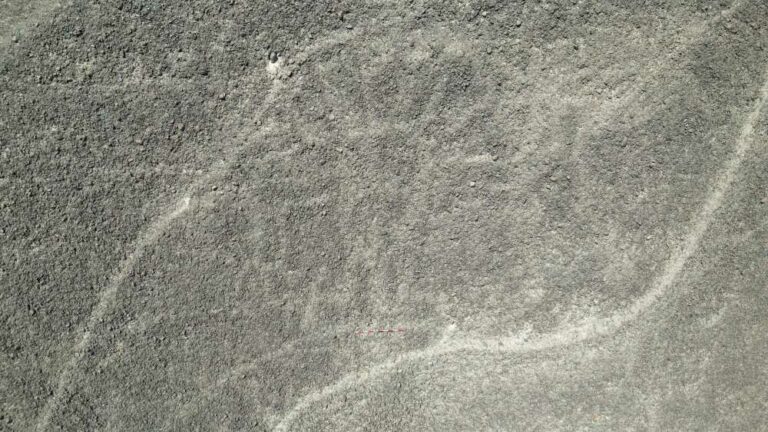
Nazca lines
Raw image of “Humanoid” geoglyph (Credit: Sakai et al.).

Nazca Lines
AI-enhanced “humanoid” geoglyph (Credit: Sakai et al.).
Deciphering the Purpose of the Geoglyphs
After constructing a map of all known geoglyphs of all types and overlaying various paths and walkways previously identified on the Nazca Pampa, the researchers say they began to see some patterns emerge. For example, the relief types were built “within a viewing distance” from foot trails at an average distance of 43 meters. Conversely, on average, the line types were built 34 meters away from the more extensive linear network of geometrical geoglyphs.
“All of the geoglyphs near the trail are relief-type,” Sakai told The Debrief. “Many of the relief-type geoglyphs were set up in places that could be seen from the trail, so I think they were created with the purpose of being seen.”
TOPICS: Arts/Photography; Computers/Internet; History; Outdoors
KEYWORDS:

Hey! FReepers!
Help Fill The Tank!
How About It? Huh?
It Ain't Askin' Too Much
Ya Know....
Click here: to donate by Credit Card
Or here: to donate by PayPal
Or by mail to: Free Republic, LLC - PO Box 9771 - Fresno, CA 93794
Thank you very much and God bless you.
1 posted on 09/25/2024 7:01:57 PM PDT by Red Badger
To: SunkenCiv
PinGGG!....................
2 posted on 09/25/2024 7:02:18 PM PDT by Red Badger (Homeless veterans camp in the streets while illegals are put up in 5 Star hotels....................)
To: Red Badger
3 posted on 09/25/2024 7:06:44 PM PDT by Openurmind
To: Red Badger
This fascinates me more than any of the other "spooky" phenomenon. Seriously.

To: Red Badger
I’d say the aliens 👽 are behind the lines in Nazca and the pyramids of Egypt 🇪🇬.
5 posted on 09/25/2024 7:13:59 PM PDT by No name given ( Anonymous is who you’ll know me as)
To: Red Badger
No bunny with a pancake on it’s head ?
Were these people even civilized ?
l; )
6 posted on 09/25/2024 7:14:57 PM PDT by UCANSEE2
To: Red Badger
The best guess is that those lines may have been a kind of labyrinth to walk for religious purposes. I think they were probably made by teenagers trying cause trouble
7 posted on 09/25/2024 7:15:05 PM PDT by Fai Mao (The US government is run by pedophiles and Perverts for pedophiles and perverts.)
To: Red Badger
The best guess is that those lines may have been a kind of labyrinth to walk for religious purposes. I think they were probably made by teenagers trying cause trouble
8 posted on 09/25/2024 7:17:20 PM PDT by Fai Mao (The US government is run by pedophiles and Perverts for pedophiles and perverts.)
To: Red Badger
totally amazing- the amount of work that went into them- some are what? Miles long? how did they keep everything proportional? Surely they couldn’t see from one end to the other-
9 posted on 09/25/2024 7:18:00 PM PDT by Bob434
Disclaimer: Opinions posted on Free Republic are those of the individual posters and do not necessarily represent the opinion of Free Republic or its management. All materials posted herein are protected by copyright law and the exemption for fair use of copyrighted works.
FreeRepublic.com is powered by software copyright 2000-2008 John Robinson

 By Free Republic | Created at 2024-09-26 02:19:26 | Updated at 2024-10-01 01:44:08
4 days ago
By Free Republic | Created at 2024-09-26 02:19:26 | Updated at 2024-10-01 01:44:08
4 days ago



